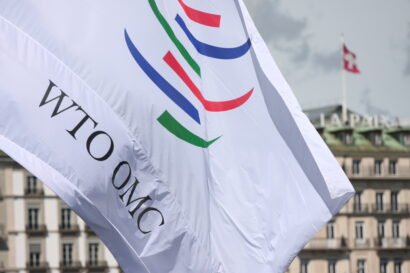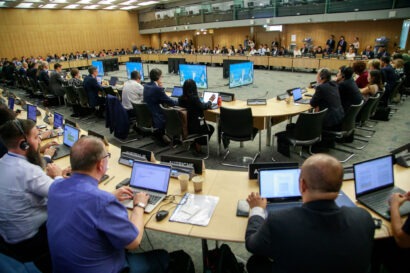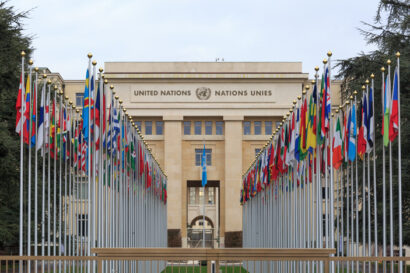The Biden Administration’s proposal
On March 31, the Biden Administration proposed, as part of its “Made in America” tax proposals, a 21% minimum tax on affiliates of US-owned multinationals operating in countries around the world.
Under the proposal, if a US-owned company operating in a foreign jurisdiction were to succeed, perhaps through avoidance devices or through a locally provided tax incentive, in reducing its local effective tax rate to 11%, the US Treasury would impose a “top up” tax of 10% on the US-owned company, thus bringing the local effective rate to the legislated minimum of 21%. The proposal, if enacted, would reduce the incentive for US companies to conduct operations abroad in pursuit of low effective tax rates.
The proposal would reduce the effectiveness of investment incentives offered by countries, including developing countries, to affiliates of US multinationals. That is, there would be no point in offering an incentive that would bring the taxpayer’s effective rate below the 21% minimum, if the US will impose a top-up tax to negate the effect of the incentive.
The new US proposal is similar in form to the “GILTI” top-up tax that has been in the US tax code since 2018, except that (i) the proposed 21% rate is much higher than the GILTI rate of 10.5 to 13.25%; and (ii) whereas the GILTI tax is imposed on an “overall” basis, so that the US multinational group can offset high effective rates in some countries against low rates in others, the proposed minimum tax would instead operate on a more stringent “country-by-country” basis.
The US proposal also is designed to be consistent with the “income inclusion rule (IIR)” of the Pillar 2 reforms now under consideration by the OECD’s Inclusive Framework. The IIR would, like the US proposal, apply a minimum tax regime on a country-by-country basis, although the rate of the tax is yet to be determined.
Countering the race to the bottom
The US proposal reflects a rejection by the Biden Administration of unconstrained international tax competition in the area of corporate taxation, and the global “race to the bottom” that has constrained countries’ ability to raise revenue from multinational businesses operating in their jurisdictions. Although the Administration describes the minimum tax proposal as intended primarily to discourage the outbound migration of business activity from the United States, the Treasury has also noted the benefits that might be provided to other countries from lessened pressure to sacrifice tax revenues by offering investment incentives.
Congressional approval of the proposed minimum tax in the United States is not assured, and the fate of the legislation might remain unknown for some time. Nevertheless, given the prominence of the United States in multilateral tax debates, the proposal has already breathed new energy into the Pillar 2 minimum-tax proposal. Multilateral agreement on a country-by-country Pillar 2 regime, with a minimum-tax rate higher than US GILTI levels, has become substantially more likely.
Renewed debate on investment incentives
The greater likelihood of agreement may well lend new urgency to the debate over the policy questions that are raised by the minimum tax concept that is included in the Pillar 2 proposals. One fundamental question is whether governments, including those of developing countries, are truly prepared to relinquish some of their ability to offer tax incentives for inbound investment by accepting a global minimum tax rate under Pillar 2. The fact that Pillar 2 has advanced as far as it has suggests that governments generally have accepted the necessity of a global minimum tax to constrain the race to the bottom.
I have previously argued, as have many others, that tax competition, particularly in the developing world, has led to a level of corporate taxation that is far lower than a reasonable balance between the competing goals of generating national revenue and promoting corporate investment would indicate. Views on this question, however, are not unanimous, and a resurgence of debate on this question can be expected as the adoption of a Pillar 2 minimum tax appears more likely.
The question of rate
And then there remains the question of rate: at what rate will a global minimum tax reach a desirable balance between constraining tax competition and facilitating global corporate investment? The 21% proposal of the Biden Administration has given new impetus to this debate. The President of the World Bank has recently weighed in with concern that the proposed rate may be too high, while the ICRICT advocates it should be 25%. One can expect vigorous debate on the question of rate within the Inclusive Framework as consideration of Pillar 2 advances.
Constructive debate is necessary
It is important that as debates over Pillar 2 move forward, the central policy questions be aired fully and explicitly. If the central policy questions are left unresolved, even swept under the rug, the inevitable result will be a weak compromise: a regime that gives the appearance of a functioning minimum tax, but one so riddled by technical deficiencies and complexity as to render it ineffective.
I hope that the Biden proposals will lead to an airing, both in the United States and within the Inclusive Framework, of an explicit and evidence-based debate on the socially optimal balance between the competing goals of constraining tax competition and facilitating global corporate investment, and that a sound and durable policy consensus will arise and ultimately be reflected in effective national legislation around the world.



